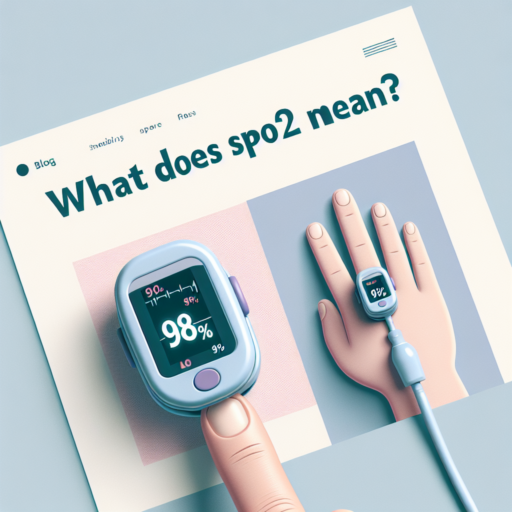No se han encontrado productos.
What is normal SpO2 by age?
Understanding the normal SpO2 levels across different age groups is crucial for monitoring and maintaining overall health. SpO2, or oxygen saturation, is the measure of the amount of oxygen-carrying hemoglobin in the blood relative to the amount of hemoglobin not carrying oxygen. It’s an essential vital sign that can indicate how well oxygen is being distributed throughout your body.
Normal SpO2 Levels in Children and Adults
For both adults and children, a normal SpO2 level ranges from 95% to 100%. This range indicates that the body is receiving a sufficient amount of oxygen to function effectively. It’s important to note, however, that certain conditions can affect these values, and what’s considered normal can vary slightly based on individual health circumstances.
Considerations for Infants
Infants may have slightly lower SpO2 levels right after birth. However, within a few minutes, their levels should be within the normal adult range. It is essential to monitor newborns’ SpO2 to ensure that they do not have conditions affecting their oxygen levels, as their bodies are more sensitive and can require intervention more quickly.
Differences in SpO2 levels by age are generally minimal once a person reaches childhood. That said, it’s always crucial to consider the overall health context of the individual when evaluating whether their SpO2 level is optimal. Regular monitoring can help detect potential issues early, aiding in timely medical care and intervention.
What is an unsafe sp02 level?
Understanding the unsafe sp02 levels is critical for maintaining optimal health and preventing potential health risks. The sp02, or oxygen saturation level, indicates the percentage of hemoglobin in the blood that is saturated with oxygen. Normally, a healthy individual should have an sp02 level between 95% to 100%. When levels fall below 95%, it raises concerns about the body’s oxygenation, signaling an unsafe sp02 level.
An unsafe sp02 level can be indicative of several underlying health conditions, such as heart issues, respiratory problems, or obstructive sleep apnea. Levels that drop below 90% are considered critically low and warrant immediate medical attention. This is because insufficient oxygen can impair the function of vital organs, leading to severe and potentially life-threatening complications if not addressed promptly.
To monitor sp02 levels and ensure they remain within a safe range, individuals might use pulse oximeters, which are non-invasive devices placed on a fingertip. Consistently low sp02 readings, especially those under 95%, should prompt further evaluation by a healthcare provider. It’s essential for individuals at risk or with preexisting conditions to regularly check their oxygen saturation to avoid the dangers associated with unsafe sp02 levels.
What happens if SP02 is low?
When the SpO2 level falls below the normal range, which is typically between 95% to 100%, it can indicate that your body isn’t receiving enough oxygen. This condition, known as hypoxemia, can lead to various health complications. Immediate effects can include signs of fatigue, shortness of breath, and an increased heart rate as the body tries to compensate for the reduced oxygen levels.
Chronic low SpO2 levels can have more severe implications on one’s health. Over time, inadequate oxygenation can stress the cardiovascular system, potentially leading to heart-related issues. Additionally, the brain, which is highly sensitive to oxygen levels, can suffer from cognitive impairments, affecting memory, reaction times, and overall mental performance.
Persistent low levels of SpO2 can trigger the body’s compensatory mechanisms, which may include increased red blood cell production to enhance oxygen-carrying capacity. While this may seem beneficial, it can also result in blood thickening or polycythemia, which poses its own set of risks such as blood clots and strokes.
What is a good sp02%?
Understanding the optimal range for your blood oxygen saturation level, commonly referred to as SpO2%, is crucial to monitoring your overall health and well-being. A good SpO2% falls within a specific range that indicates your body is effectively oxygenating its blood. This figure is particularly important in the context of respiratory health, circulatory system function, and during physical activity or high-altitude exposure.
A healthy and optimal SpO2% typically ranges from 95% to 100%. Levels within this range suggest that your red blood cells are carrying an adequate amount of oxygen to meet your body’s needs. It is worth noting that while a reading close to 100% is considered excellent, variations within the healthy range are expected and can be influenced by numerous factors including altitude, fitness level, and existing health conditions.
When monitoring SpO2%, any reading below 95% warrants attention. Persistently low spO2 levels, known as hypoxemia, can lead to symptoms such as shortness of breath, headaches, and confusion. If you experience a reading below this threshold, it’s advisable to consult a healthcare professional for further evaluation.




